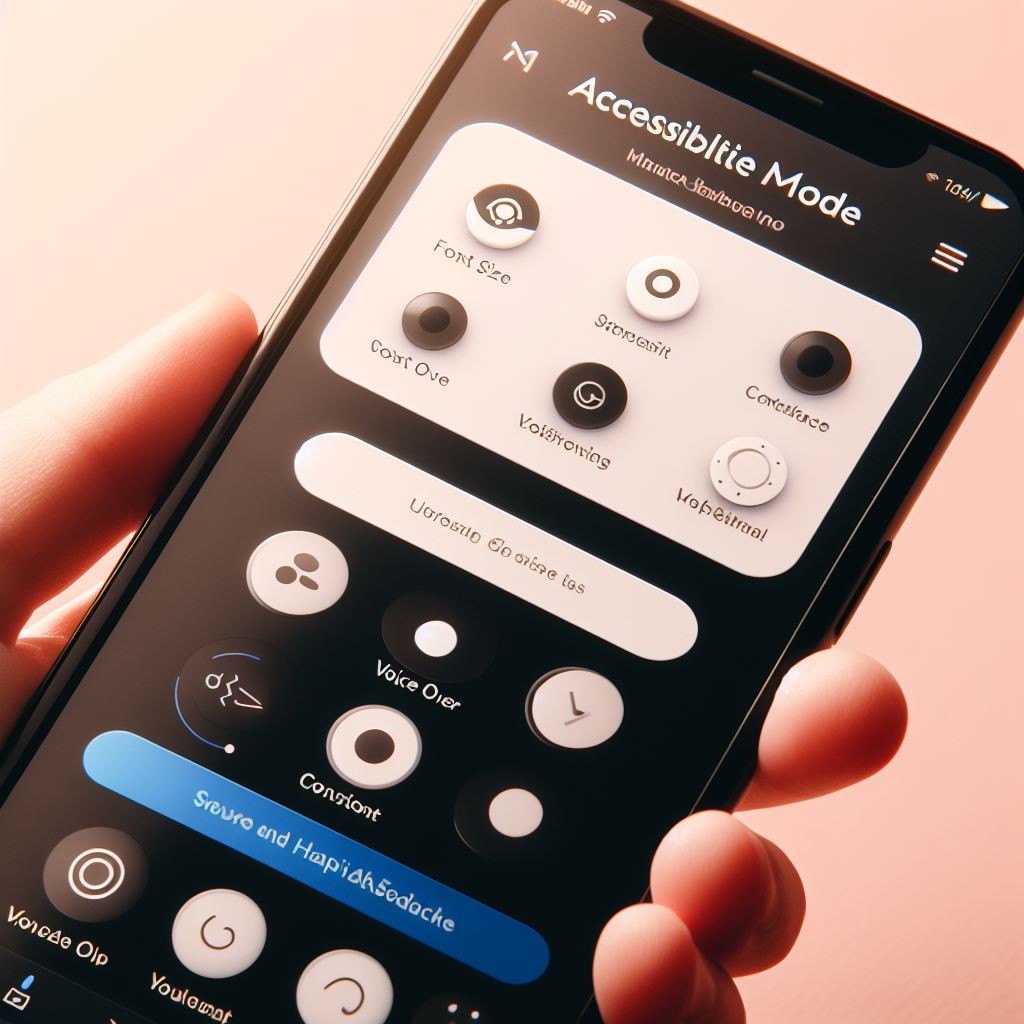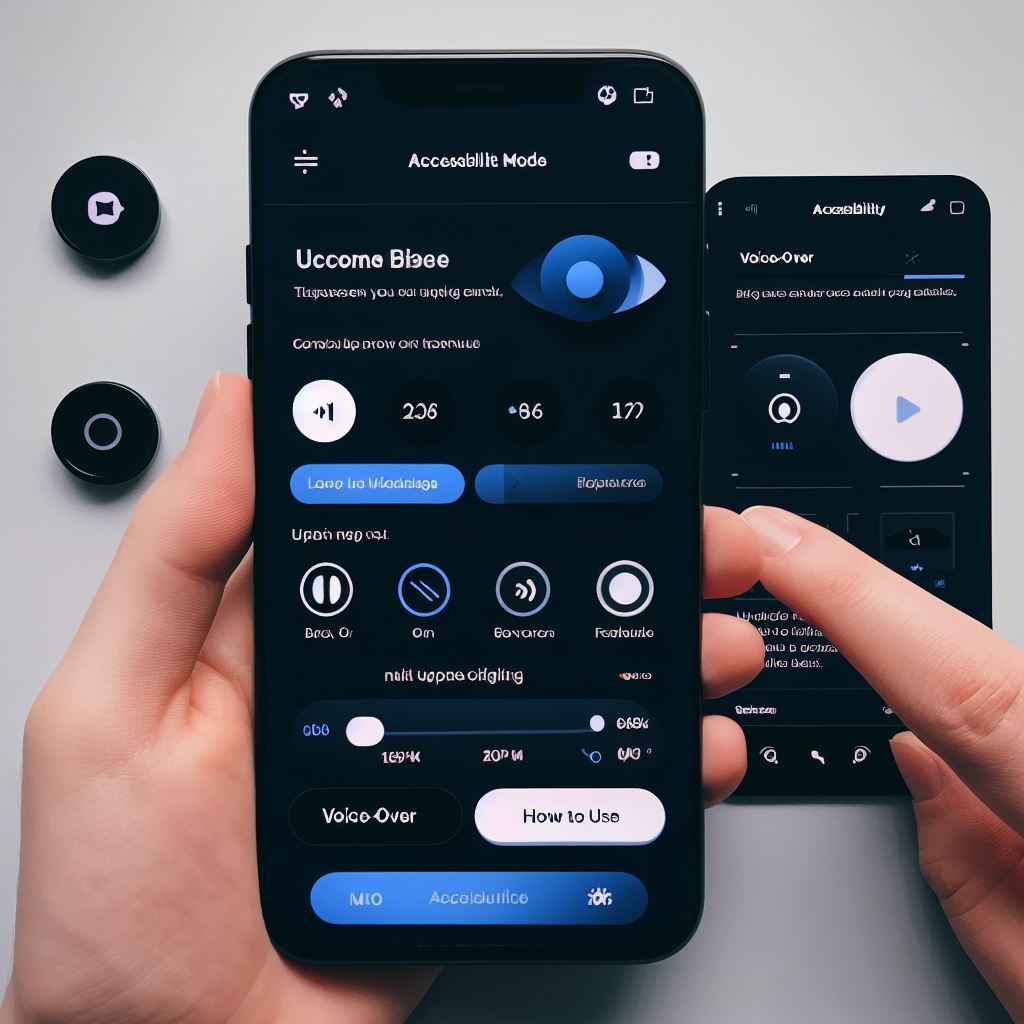
Mobile apps’ salient features, such as usability and accessibility, signal its importance in this digital epoch, due to apps becoming a ubiquitous presence in individuals’ lives. From connecting socially to viewing multimedia entertainment and executing imperative transactions, such applications’ role has transformed into an essential facet of routine life.
The significance of mobile app accessibility comes to the forefront as an aspect demanding urgency and consideration. This pertains to the usage of these digital platforms inclusive of all users, spanning diverse abilities and requirements. Disappointing though, not all apps meet the accessibility standards as crucial attention to them by the designers and creators often proves inadequate. This deficiency translates to a sizeable demographic of users who face challenges in reciprocating and navigating these interfaces effectively and fluently.
Ignoring accessibility in app design limits the user base, essentially excluding those who need the app but cannot access or use it. Consequently, the lack of a diverse user base can bring negative implications such as damage to a brand’s image and reputation. This could potentially incur legal repercussions as ignoring accessibility might parallel violation of inclusive and fair usage policies under several jurisdictions, causing more harm than creating an exclusive app space.
The effects of neglected accessibility necessitate a commitment from developers and designers to prioritize designing accessible mobile apps. By adopting such an approach, it fosters an environment where these digital tools encompass a holistic and inclusive user base – no exceptions. Enabling accessibility in apps transforms a hindrance into a facilitator, ensuring the broadest spectrum of users can interact without any hardship, making the digital world more inclusive and friendly.
The stride towards accessibility enhances the user experience significantly as it morphs the interactional field between the user and the mobile app into a level playing field. By doing so, designers and app creators can accommodate the entire pool of use-case scenarios, fostering a mutualistic synergy between the technology’s potential and the user’s fingerprint impressions.
As a recommendation, proactively moulding mobile apps aimed at catering to all types of users should cement itself as a non-negotiable priority, an obligation rather than a choice or an added feature. Dedicated focus on accessibility will inevitably result in the creation of more user-friendly apps, offering mobility solutions that pave the way for a genuinely inclusive digital world.
Key Principles of Mobile App Accessibility
The core tenets of mobile app accessibility demand an appreciation for the range of abilities present within a broad and varied user base. This comprehension begins with the identification and understanding of potential obstacles which could be affecting the interaction between user and application. These obstructions could range from visual, auditory, motor, or cognitive impairments that users may have.
The concept of accessibility is built on three integral pillars — perceivability, operability, and understandability. Perceivability, the first, involves ensuring users can fully engage with the app’s content. This can be achieved by providing different methods such as text alternatives for non-text elements or suggestions for zooming or scaling text. The color contrast ratios also need to be considered for those users who have visual impairments.
Operability, the second principle, posits that every facet of the user interface including navigation must be functional and usable. Implementing this can look like a variety of things, including touch targets of sufficient size for tapping, alternate interfaces such as voice commands or gesture controls for those with motor impairments, or simplifying the design interface for cognitive ease.

Understandability, the third pillar, emphasizes the necessity for apps to be simple to use and navigate with clear, concise instructions. This includes eschewing complex jargon that could confuse users, providing direct, clear error messages that are easily decipherable, and maintaining the consistency of the menu and navigation tools across all parts of the app.
The crucial takeaway from these principles is that accessibility is not a static concept but rather a dynamic element that must be continuously updated and adapted to ensure all users, regardless of their abilities or disabilities, can engage with the application.
By integrating perceivability, operability, and understandability, we can pave the way for more inclusive designs that respect – and adapt to – the diversity of the end user, thus making technology more approachable for everyone. A deep understanding and commitment to these principles not only improves mobile application designs but also enriches the overall user experience by fostering a more accessible digital environment.
Mobile App Accessibility Checklist
The concept of mobile application accessibility is made achievable and straightforward with a well-prepared checklist. To begin with, a significant aspect to consider during app development or improvement pertains to the utilization of accessibility features embedded within mobile platforms. Android and iOS, for instance, already come with numerous accessibility tools such as text-to-speech, magnification tools, and closed captions. These universal design supports can be effectively incorporated into an application, enhancing the experience for users and extending reach to those with varying abilities.
The provision of alternative ways to interact with and view the application is of prime importance. This can be realized by offering textual labels that are descriptive for every button, form, icon, and image. It ensures that individuals using screen reader technology to navigate the app are adequately informed of each element’s purpose, thus promoting a more inclusive user experience.
It is also highly recommended to avoid creating touch targets that are overly small or clustered links. It might be hard for everyone to interact with, especially for individuals who may encounter challenges with fine motor skills. Offering alternative gesture controls contributes positively to such instances making the app more user-friendly and accessible.
It is vital to endorse an app against recognized global accessibility parameters like the Web Content Accessibility Guidelines (WCAG). It is a collection of well-defined guidelines which when followed ensure an app’s content is more accessible to a wider range of individuals with different abilities.
Above all, the most effective way to ensure optimum accessibility is by conducting rigorous testing phases involving actual users with diverse abilities. Their valuable insights and experiences using the app can help identify any unseen barriers. This, in turn, can help streamline improvements to the accessibility principles, ensuring the app truly becomes universally user-friendly and accessible to all its users.
The goal of every app developer should be to create a product that is as inclusive and accessible as possible. By integrating these principles, app accessibility won’t only be a mere checklist, but a guideline to creating an app designed for everyone.
The process seems challenging, but with a systematic and careful approach, designing an accessible and inclusive app becomes an achievable reality, benefiting users and the business alike.
Fostering Mobile Accessibility
Emphasizing the importance of mobile app accessibility underlines a firm’s commitment to inclusivity and unrestricted utility, a value that resonates with the wider public. As the globe transitions into an increasingly digital society, the roles of designers and developers become ever so crucial. They hold in their hands the power – and indeed, the responsibility – to construct a digital environment devoid of navigational complications or operational impediments. Offering such a navigable domain not only ensures smooth interactions but also enhances the overall user experience. The objective is uncomplicated: to make everyday digital tasks a comfortable and efficient experience for all users, independent of their specific abilities or challenges.
By rendering mobile app accessibility a regular practice rather than a belated consideration, we can transform the way technological innovations are perceived, utilized, and admired by a vast range of demographic groups. It’s not merely pursuing a trend; instead, it’s about leading a change, advocating for user-friendly design that recognizes and responds to various user needs, abilities, and contexts. Realizing this will aid in bridging digital gaps and providing a common platform for all accessibilities.
As creators shift their focus to the aspect of accessibility during the early stages of a mobile app’s development journey, they inherently contribute to this anticipated revolution. When access to technology becomes unrestricted, it propels us one step closer to digital inclusion, a dream we aspire to turn into a reality.
Gaining this perspective is vital for brands hoping to resonate with their users while also positively influencing their public image. More than a mere business move, this resonates with the ethos of serving various user groups fairly, fostering a brand image of responsibility, empathy, and inclusivity.
Such mobile app accessibility practices, when promptly implemented, reinforce this vision and strengthen engagement with the user community. It allows, for instance, visually impaired users to fully utilize an app’s features and enjoy a seamless interaction, just as any other user would.
The digital realm is capable of being an inclusive space for all, irrespective of their specific abilities or limitations. Libraries, commerce, and communication platforms can all be universally accessible and friendly. Making mobile app accessibility a standard practice is the key to unlocking this potential and modifying technology for universal benefit. This nurtures not only a blend of diverse user experiences but also cultivates an inclusive culture in technological development for future generations.
By valuing everyone’s interaction and input without any restrictions and biases, companies can bring about a positive change in society, starting with their mobile applications. This is an overdue imperative that calls for immediate attention and action.